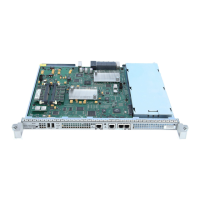PurposeCommand or Action
Configures the BGP routing process to accept and attempt BGP
connections to external peers residing on networks that are not directly
connected.
neighbor ip-address ebgp-multihop
Example:
switch(config-router)# neighbor
26.0.0.1 ebgp-multihop
Step 5
Adds an entry to the BGP or multiprotocol BGP neighbor table.
neighbor ip-address remote-as as-no
Example:
switch(config-router)# neighbor
26.0.0.1 remote-as 1
Step 6
Enables Message Digest 5 (MD5) authentication on a TCP connection
between two BGP peers.
neighbor ip-address password string
Example:
switch(config-router)# neighbor
26.0.0.1 password 123
Step 7
•
ip-address—IP address of the BGP-speaking neighbor.
•
string—Case-sensitive password of up to 25 characters. The first
character cannot be a number. The string can contain any
alphanumeric characters, including spaces. You cannot specify a
password in the format number-space-anything. The space after the
number can cause authentication to fail.
Enables the proximity algorithm using BGP Autonomous Systems (AS)
path length-based proximity.
ip urib bgp bestpath
Example:
switch(config)# ip urib bgp bestpath
Step 8
Configuring IS-IS for Proximity Calculations
Use this task to configure the Intermediate System-to-Intermediate System (IS-IS) routing process used for
proximity calculations performed by the proximity engine.
SUMMARY STEPS
1.
router isis process-name
2.
net network-entity-title
3.
lsp-mtu max-lsp-size
4.
log-adjacency-changes
5.
is-type {level-1 | level-2 | level -1-2}
6.
authentication-check {level-1 | level-2}
7.
authentication-type {md5 | text} {level-1 | level-2}
8.
authentication key-chain name-of-chain {level-1 | level-2}
Cisco Network Positioning System Configuration Guide for the Cisco ASR 1000 Router, Release 1.0
24 OL-25794-01
Configuring the Routing Protocols Used for Network Proximity
Configuring IS-IS for Proximity Calculations

